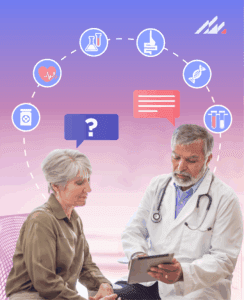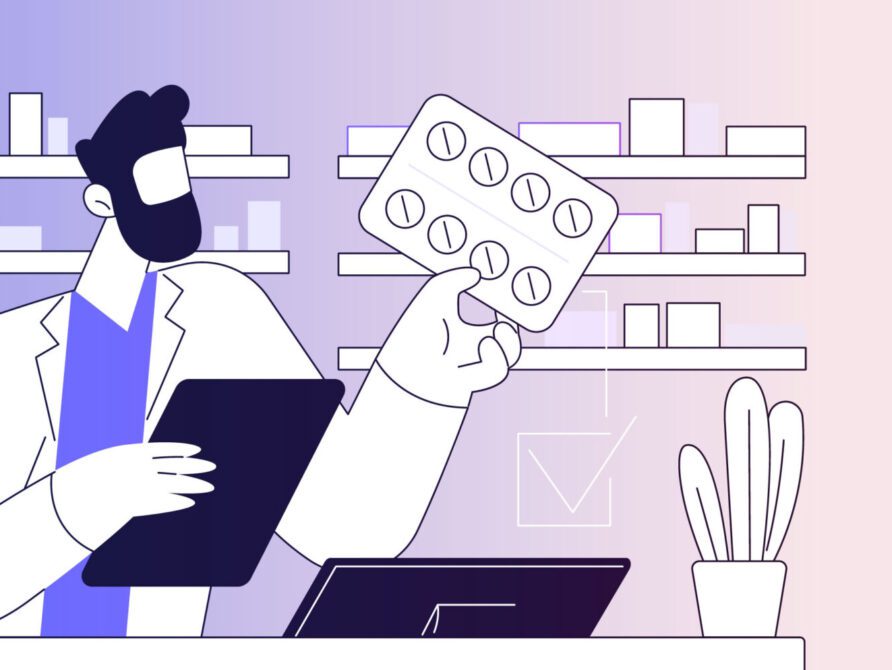Article
Health literacy: What we all need to know
The digital divide: A double-edged sword in health literacy
Technology has undeniably transformed healthcare, presenting both incredible opportunities and significant challenges. While it promises unlimited access to information, it also can make things complicated, especially when it comes to health literacy.
According to the World Health Organization (WHO), health literacy is “the ability to search, find, understand and evaluate health information from electronic sources and to use the knowledge gained to solve health related problems.” As digital platforms grow, so does the sheer volume of health information. Social media, blogs and community forums are full of unverified advice, leaving patients feeling overwhelmed and uncertain about their choices. This can lead to confusion, delayed care or even harmful decisions. Further, for those without reliable internet access or essential digital skills, navigating even basic health information can be incredibly difficult, if not completely out of reach. True patient engagement demands that we look beyond mere access and genuinely understand the patient’s context and starting point.
Social Determinants of Health: The bigger picture
 Health literacy doesn’t exist in a vacuum; it’s intricately shaped by Social Determinants of Health (SDOH). These factors can include a person’s geographic location, economic status, education level, access to local resources, transportation options and, critically, their access to technology and the internet, which all play a monumental role.
Health literacy doesn’t exist in a vacuum; it’s intricately shaped by Social Determinants of Health (SDOH). These factors can include a person’s geographic location, economic status, education level, access to local resources, transportation options and, critically, their access to technology and the internet, which all play a monumental role.
While providers can’t control the vast and often misleading information patients encounter online, they can be a trusted voice amidst the digital noise. This is where strategic technological solutions come into play. With the right tools, providers can effectively guide patients to credible sources and help them make informed decisions, even in resource-constrained environments. Our focus at Altera is to empower healthcare organizations with these tools, enabling them to bridge these gaps.
Practical steps and the role of technology
Improving health literacy requires both high-touch human interaction and scalable technological support. Organizations can take simple, yet meaningful, steps to help patients become more informed and engaged in their care:
- Foster active patient participation: Encourage patients to prepare questions before appointments and take notes during visits. Having a trusted friend or family member present can also significantly improve information retention and provide emotional support.
- Curate reliable resources: Beyond encouraging patients, providers should be empowered to easily share curated lists of reliable, evidence-based sources like the Centers for Disease Control and Prevention (CDC) or the National Institutes of Health (NIH). This is where software solutions can streamline the process, making it simple for providers to push vetted information directly to patients through secure, accessible platforms.
- Evaluate and optimize patient-facing materials: It’s crucial to review all organizational resources, both digital and printed. Are they written in clear, plain language? Are they accessible to those with limited literacy or who require translation? Software can play a key role here by enabling rapid assessment of readability and facilitating multi-language support, ensuring health information is truly digestible for diverse patient populations.
True patient engagement demands that we look beyond mere access and genuinely understand the patient’s context and starting point.
Empowering patients with Altera’s vision
Ultimately, health literacy provides a powerful foundation for better health outcomes. When patients truly understand their care, they’re more likely to adhere to treatment plans, ask critical questions and actively participate in their health journeys.
At Altera, we are committed to leveraging technology to empower patients with clear, accessible information. Our software solutions are designed to build trust and confidence by simplifying complex medical information and delivering it in ways that are consumable for all patients, regardless of their digital fluency or socioeconomic background. Our vision is to support patients and empower them every step of the way, no matter where they’re starting from, ensuring technology serves as a tool for equity, and is not a barrier.












